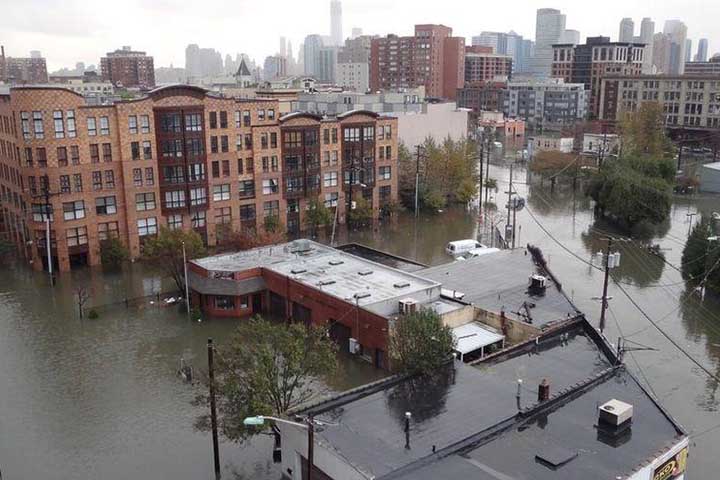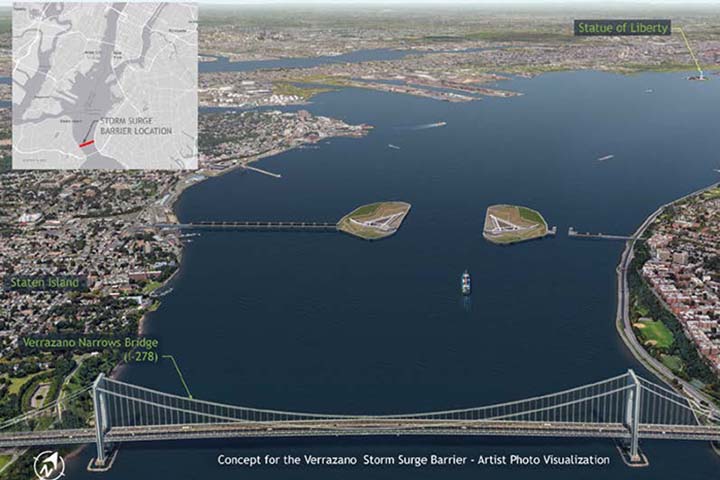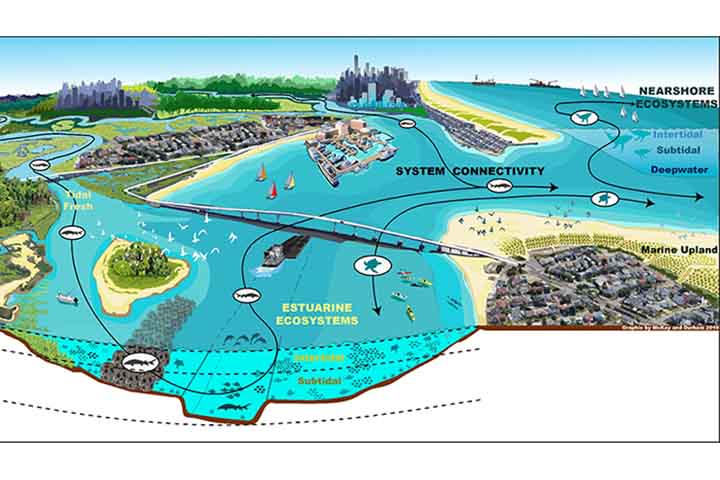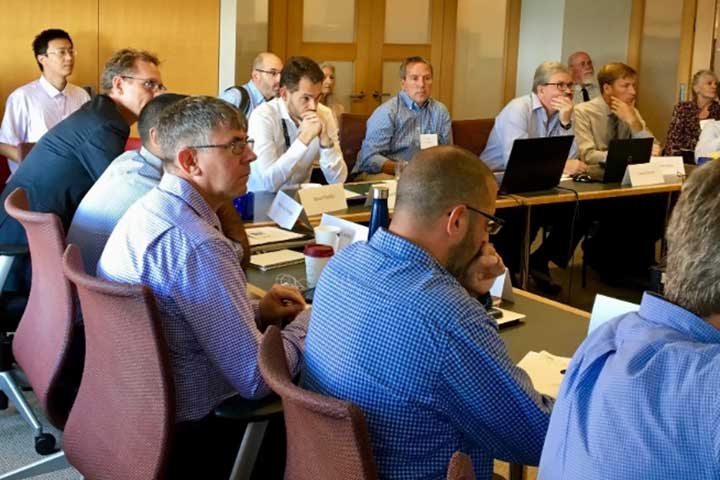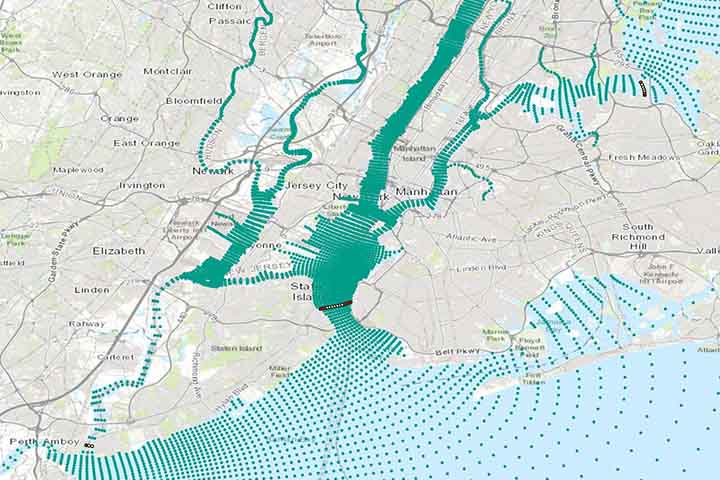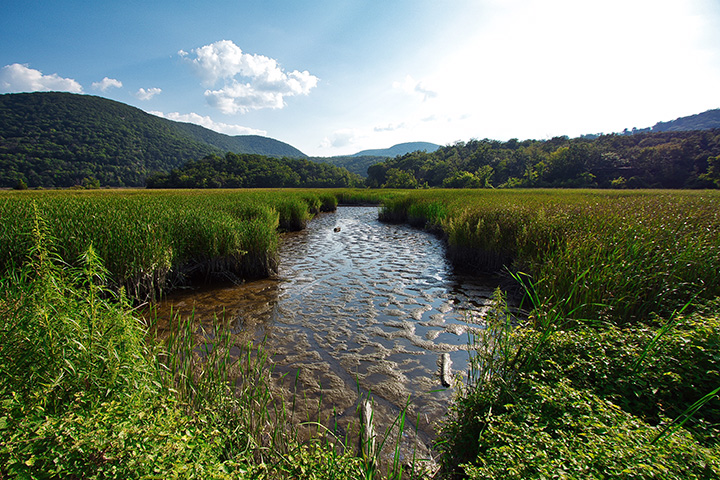
Coastal cities around the world are exploring structural engineering options to defend against extreme storms and the resulting surge of ocean water that can lead to massive flooding. Storm surge barriers or tide gates can minimize flooding and protect people and property during large storms. These barriers typically span the opening of a harbor or river mouth and include gates that are closed only when storm surges are expected. However, even when gates are open, barriers reduce water flow and tidal exchange, which in turn affects water quality and ecological processes. The environmental effects of surge barriers are poorly understood. Scientists and engineers are increasingly recognizing the need for broad research initiatives to assess the advantages and disadvantages of large surge barriers.
In the New York metropolitan area, concern about threats to highly valuable and vulnerable coastal infrastructure from sea level rise and extreme storms has driven interest in a gated surge barrier system. The US Army Corps of Engineers, state of New York and New Jersey, and New York City have partnered to conduct the Harbor and Tributaries (HAT) Focus Area Feasibility Study to evaluate barriers and other options to manage coastal storm risks. To better understand the impacts constructed surge barriers would have on the Hudson River and the surrounding estuary ecosystem, this catalyst project facilitated the development of a collaborative research agenda to address information needs. The project modeled and analyzed the physical effects of surge barriers and hosted a series of workshops to synthesize and share information. The project gave scientists and community stakeholders a more robust understanding of surge barrier effects on the Hudson River and its wetlands, informed the HAT feasibility study, and established a foundation for collaboration among people involved in the topic around the world.
